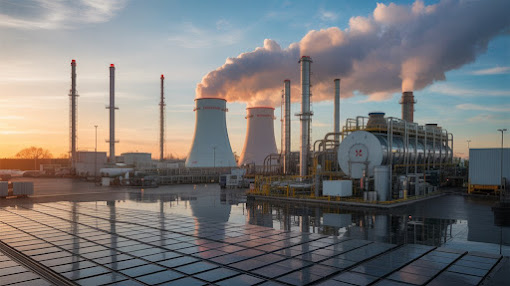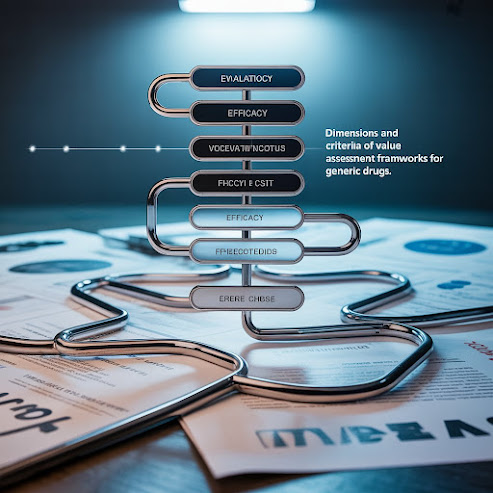P2X Polygeneration with CO₂ Utilization and Recovery | #EnergyInnovation #FutureOfEnergy #EnergyTransition #TechForGood #CleanTech #IntegratedEnergy
1. Introduction to Power-to-X (P2X) and Polygeneration
Power-to-X (P2X) refers to the conversion of surplus electrical energy—primarily from renewable sources—into different forms of energy carriers or chemical products such as hydrogen, ammonia, and methanol. These carriers support decarbonization, energy storage, and industrial feedstocks. Polygeneration systems are advanced energy setups designed to simultaneously produce multiple useful outputs—such as electricity, fuels, heating, and cooling—from a single or integrated input. These systems are more efficient than traditional single-product systems, reducing waste and improving energy utilization.
2. System Configuration Overview
The proposed P2X system consists of the following subsystems:
-
Air Separation Unit (ASU): Provides pure oxygen and nitrogen.
-
Direct Oxy-Combustion Supercritical CO₂ (DOC-sCO₂) Cycle: Burns natural gas with pure oxygen to produce high-efficiency power and facilitate CO₂ capture.
-
Water Electrolyzer (WE): Produces hydrogen and oxygen using electricity.
-
Haber-Bosch Process (HBP): Converts nitrogen and hydrogen into ammonia.
-
Methanol Production Unit (MPU): Synthesizes methanol using captured CO₂ and hydrogen.
These components are interconnected to optimize resource use, minimize energy loss, and reduce emissions.
3. Process Integration and Energy Flow
-
Oxygen Recycling: Oxygen produced by the electrolyzer is redirected to the DOC system, lowering the ASU's energy burden.
-
CO₂ Utilization: CO₂ from the DOC-sCO₂ power cycle is captured and used in methanol synthesis, reducing emissions.
-
Nitrogen Recovery: Nitrogen from the ASU is used in ammonia production.
-
Heat Recovery: Waste heat from various processes is recovered and reused internally to improve overall system efficiency.
4. Thermodynamic and Economic Performance
Simulation results show significant improvements in system performance across the following configurations:
-
S1: ASU + DOC-sCO₂ only
-
S2: S1 + Water Electrolyzer
-
S3: S2 + Haber-Bosch Process
-
S4: Full system with MPU
Performance Highlights:
-
Efficiency Increase: From 45% in S1 to 56% in S4
-
CO₂ Emissions Reduction: From 200 gCO₂/MWe to 145 gCO₂/MWe
-
Levelized Cost of Hydrogen (LCOH): Reduced from $1.70/kg to $0.80/kg
-
Levelized Cost of Electricity (LCOE): Reduced from 4.3 ¢/kWh to 3.3 ¢/kWh
5. Environmental Benefits
-
Near-zero CO₂ emissions achieved through integrated carbon capture and utilization.
-
Lower NOₓ emissions due to oxy-combustion (approximately one-third compared to air-firing).
-
Reduction in fossil fuel dependency by using green hydrogen and recycling CO₂.
6. Comparison with Existing Systems
Unlike systems relying solely on intermittent renewables or conventional steam methane reforming (SMR), the proposed hybrid P2X system offers:
-
Greater reliability and scalability
-
Internal recycling of key inputs (O₂, CO₂, N₂)
-
Better cost-efficiency in HEC production
-
Robust performance independent of energy supply variability
A comparison with recent literature (summarized in Table 1) shows that while some systems reach efficiencies above 70%, they often lack CO₂ reuse strategies or economic viability at scale.
7. Applications and Industrial Impact
This P2X system can be applied in:
-
Industrial parks with high hydrogen and ammonia demand
-
Regions with natural gas availability and carbon capture mandates
-
Clean fuel hubs for transportation and export
-
Integrated energy storage and power backup facilities
The system supports energy security, carbon neutrality goals, and the creation of sustainable value chains in chemical and energy-intensive industries.
8. Conclusion and Future Work
The integration of DOC-sCO₂ cycles with electrolyzers and synthetic fuel production enables a thermally efficient, economically feasible, and environmentally sustainable polygeneration solution. This work lays a foundation for:
-
Scaling the system with renewable inputs
-
Dynamic modeling and control strategy development
-
Integration with carbon pricing and emission trading frameworks
Future work should focus on experimental validation, lifecycle assessment (LCA), and expansion toward decentralized and mobile energy hubs.
#EnergyInnovation #FutureOfEnergy #EnergyTransition #TechForGood #CleanTech #IntegratedEnergy


Comments
Post a Comment